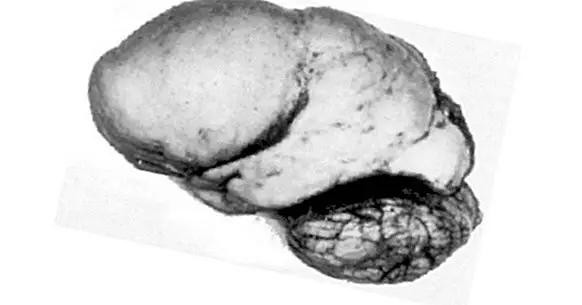Lissencephaly: symptoms, causes and treatment
Sometimes the alteration of the process of neuronal migration causes agiria, a cerebral malformation that makes the cortex look abnormally smooth, being absent the turns and grooves characteristic of this region. When these signs appear, the diagnosis of "lissencephaly" is used.
In this article we will describe What is lissencephaly, what are its causes and its most common symptoms and in what way they can be treated or at least handle such alterations.
- Maybe you're interested: "Microcephaly: symptoms, characteristics and treatment"
What is lissencephaly?
The lissencephaly is a set of disorders that are characterized by a smoothing of regions of the brain in which there are usually folds and crevices. These malformations frequently cause alterations in the development of the nervous system and therefore in cognitive and psychomotor functions.
During intrauterine development, the cerebral cortex folds back on itself in many places. This allows the volume of nervous tissue that fits inside the skull to be much larger than if the surface of the brain were completely smooth.
However, in cases of lissencephaly the grooves and folds of the brain are not formed correctly , so that this organ shows a homogeneous aspect. The intensity of this smoothing can vary in each individual, depending on the causes of the alteration.
It is a very rare disorder that can have important consequences for physical and mental development. In the most severe cases, intellectual functioning is affected very severely, while in others the deficits may be minimal.
Life expectancy is around 10 years . The most frequent causes of death are choking asphyxia, diseases of the respiratory system and epileptic seizures, which can be very serious.
Symptoms and main signs
The symptoms of lissencephaly depend on the severity of the malformations in the cerebral cortex, as well as on the specific regions that are affected. The fundamental aspect is the agiria, a technical term used to refer to the flat appearance of the cerebral cortex .
In many cases the head size of babies born with this disease is very small compared to that of other newborns. Although this is a very characteristic sign of lissencephaly, it is not present in all people affected by a disorder of this type. Occasionally hydrocephalus (accumulation of cerebrospinal fluid) occurs.
Alterations in the cerebral cortex cause delays and deficits in physical, psychomotor and cognitive development . It is also common that physical malformations occur in the hands, as well as in the fingers of these and those of the feet. On the other hand, muscle spasms and seizures are common.
Lissencephaly tends to cause problems swallowing, which in turn makes it difficult to eat food and fluids. Consequently, in many cases the physical development is further altered by nutrient deficit.
- Related article: "Types of intellectual disability (and characteristics)"
Causes of this alteration
Lissencephaly appears as a result of alterations in the formation of the cerebral cortex that occur during pregnancy. The causes of these errors can be very diverse; but nevertheless, the most common are related to genetic factors .
When intrauterine development progresses normally, between the twelfth and fourteenth weeks after fertilization, the embryonic nerve cells begin to move from the regions of the brain where they are generated to different ones. In lissencephaly this process of cell migration does not take place properly.
Scientific research reveals that this problem is usually due to mutations in multiple genes: the development of the brain is affected by not being able to express these correctly. The genes involved seem to be located on chromosomes X, 7 and 17, although they are probably not the only ones.
Virus infections and decreased blood flow The fetus may also cause signs of lissencephaly by interfering with the development of the central nervous system.
An association between lissencephaly and two genetic diseases has been identified: Miller-Dieker syndrome and Walker-Warburg syndrome . It is very common that agiria is present in the broader context of one of these disorders.
Treatment
Since it is an alteration in the morphology of the brain, lissencephaly can not be corrected in itself. It is evident that it is not possible to go back in the development of the nervous system once this has occurred.
Because of this The treatment of lissencephaly is basically symptomatic and aims to improve the quality of life and enhance the functioning of affected people.
Thus, for example, in cases in which the difficulties to swallow are very marked It may be necessary to apply a gastric tube to the stomach of babies so they can feed themselves correctly.
Muscle spasms and epileptic seizures can be managed through the use of specific medications for this type of disorder. On the other hand, when there is hydrocephalus, surgical interventions are performed to drain the accumulated cerebrospinal fluid.



















